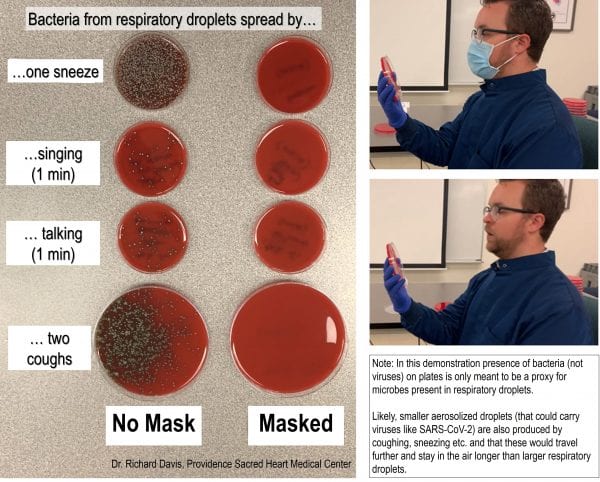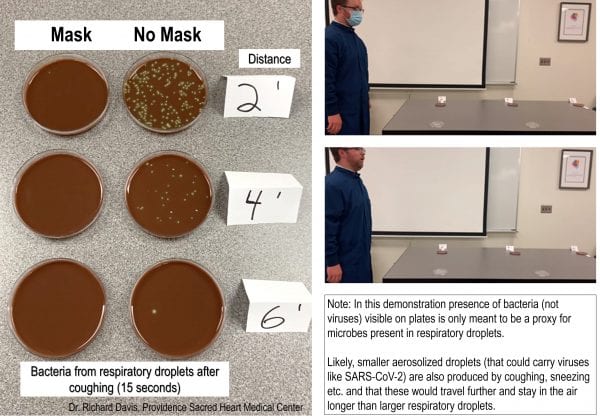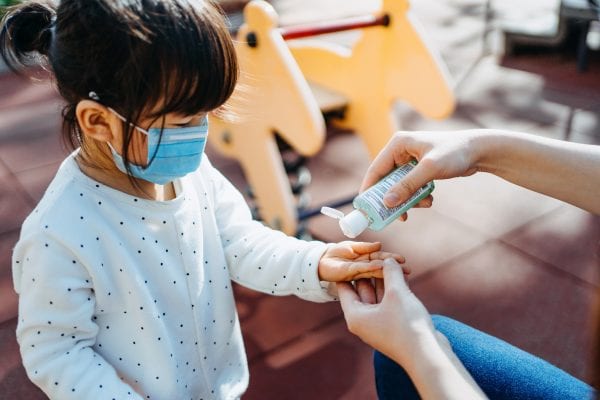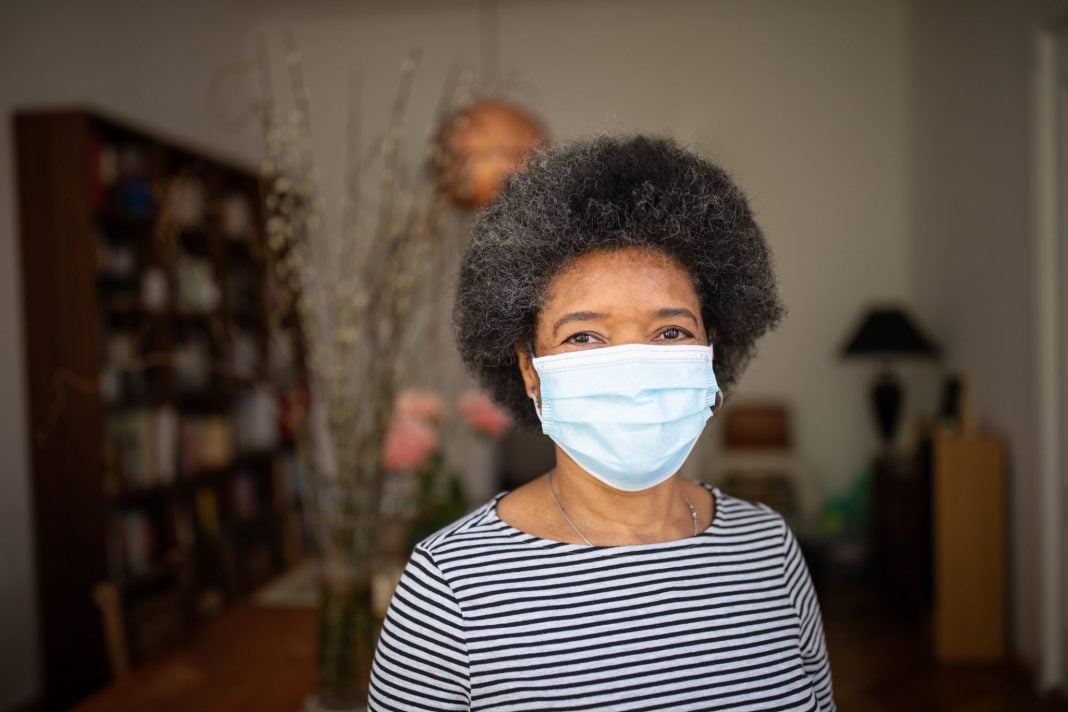AUBURN UNIVERSITY, Ala. – The idea of wearing a mask has been a somewhat controversial issue. Some Americans question the effectiveness that wearing a mask has on the prevention of spreading or contracting COVID-19. For Alabamians, Governor Kay Ivey recently extended the Alabama mask mandate until at least August 31. Professionals from the Alabama Cooperative Extension System and Auburn University discuss the science behind wearing a mask and how this act can help in the battle against COVID-19.

Demonstration 1. Image from Dr. Richard Davis’ Twitter account.
In a series of Twitter posts that went viral, Dr. Richard Davis, the clinical microbiology lab director at Providence Sacred Heart Medical Center in Spokane, Washington, showed two demonstrations where he tested the effectiveness of wearing a mask.
“First, I sneezed, sang, talked and coughed toward an agar culture plate with or without a mask,” Davis posted on Twitter. “Bacteria colonies show where droplets landed. A mask blocks virtually all of them.”
For the second demonstration, Davis said on Twitter he set open bacteria culture plates 2, 4 and 6 feet away. He then coughed hard for approximately 15 seconds. He then repeated this without a mask.
“As seen by (the) number of bacteria colonies, droplets mostly landed less than 6 feet, but a mask blocked nearly all of them,” Davis said.
How Can Wearing a Mask Help with COVID-19?
Ken Macklin, an Alabama Extension poultry science specialist and professor, said the demonstration from Davis shows that bacteria can exit a person’s mouth in the water droplets that come out when they sneeze or even breath.

Demonstration 2. Image from Dr. Richard Davis’ Twitter account.
“This demonstration shows how much bacteria can be spread. Imagine how far a virus like COVID-19, which is 100 times smaller than bacteria, can go,” Macklin said. “Not only can they go further but there will also be more virus on each respiratory droplet.”
Dr. Fred Kam, the medical director of the Auburn University Medical Clinic, said while it helps prevent both the spreading and contracting of the disease, the idea of wearing a mask deals more with preventing the spread of COVID-19.
“For a non-healthcare worker, it (wearing a mask) is more about reducing the spread from the person wearing the mask to others,” Kam said. “This is especially true for people who are asymptomatic.”
Kam also said the science exists that backs up the preventative benefits of masks and is better than the science for physical social distancing or contaminated surfaces.
In the demonstrations where Davis was wearing a mask, only one of the plates showed having bacteria, and it was minimal. According to Macklin, this shows wearing a mask can reduce the number of respiratory droplets that leave the body.
“The mask was able to catch the droplet and the bacteria that was on it,” Macklin said. “In the case of COVID-19, even though there might be more present if cultured because of the virus being smaller than bacteria, it would be significantly less than what would be seen from an unmasked person.”
Will Any Mask Work?
Because COVID-19 spreads predominantly through the respiratory tract, Kam said any facial covering will help. However, some are better than others.
“The better the filtering capability, the lesser the chance of spread,” Kam said. “However, the better the filtering a mask has, the more uncomfortable it is to keep wearing.”
Kam advises people to choose a facial covering that they can tolerate consistently and comfortably for the full amount of time that they know they will have to use it.
Show That You Care
According to Kam, by wearing a mask, it also visibly shows that person’s care for other people’s safety. People will come into contact with many others whom are vulnerable to the disease or live and care for family members whom are vulnerable.
“Additionally, wearing a mask shows that you care about service workers and business owners, whose lives or businesses will get disrupted if they end up getting infected,” Kam said. “It also shows that you care about first responders and healthcare workers, who have to care for patients with more severe complications of COVID and put their own welfare and those they love on the line every shift.”
More Information
For more Alabama Extension resources on COVID-19, visit the website, www.AlabamaReady.info. For more information, visit the Centers for Disease Control and Prevention’s website.

















